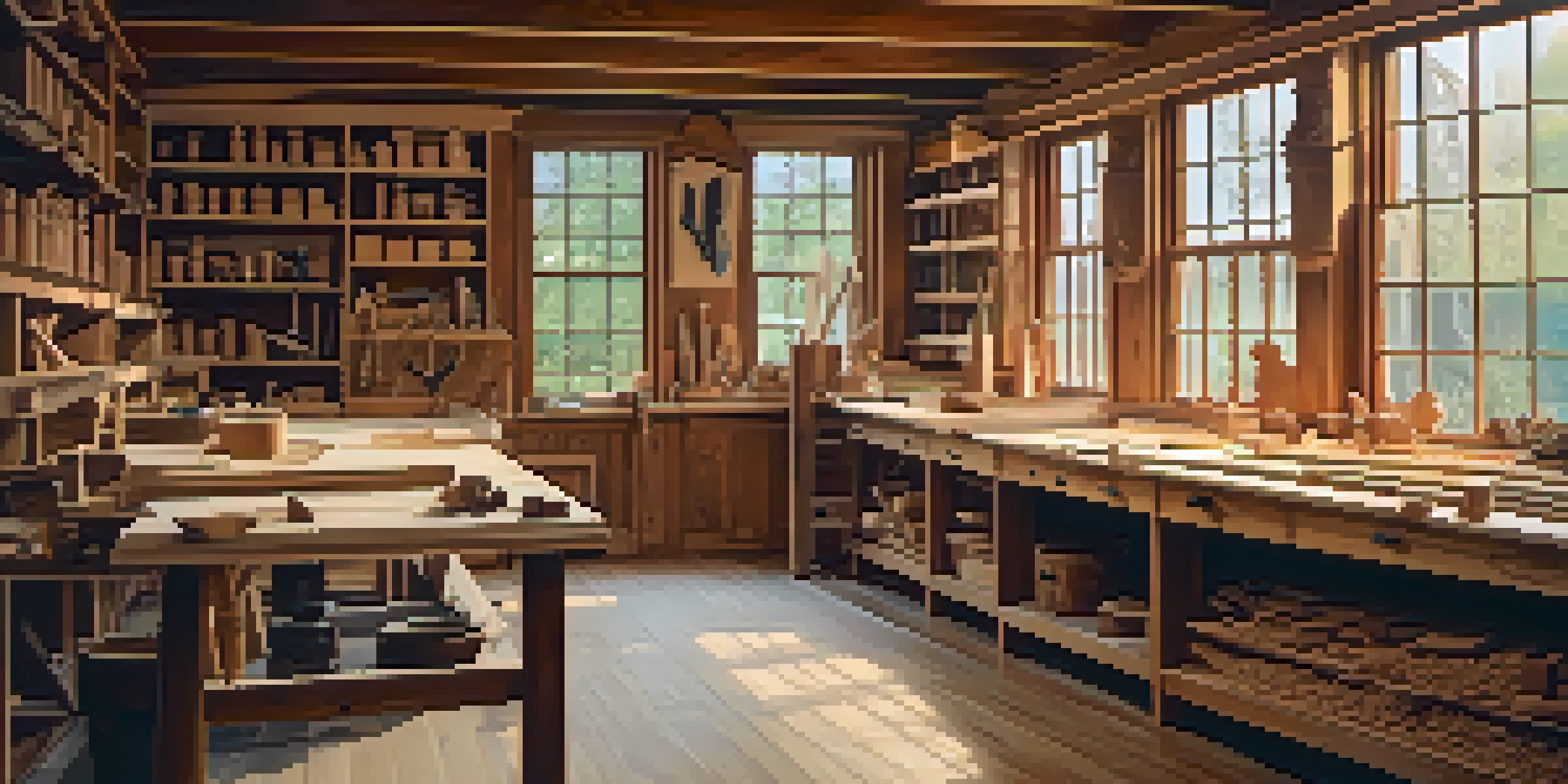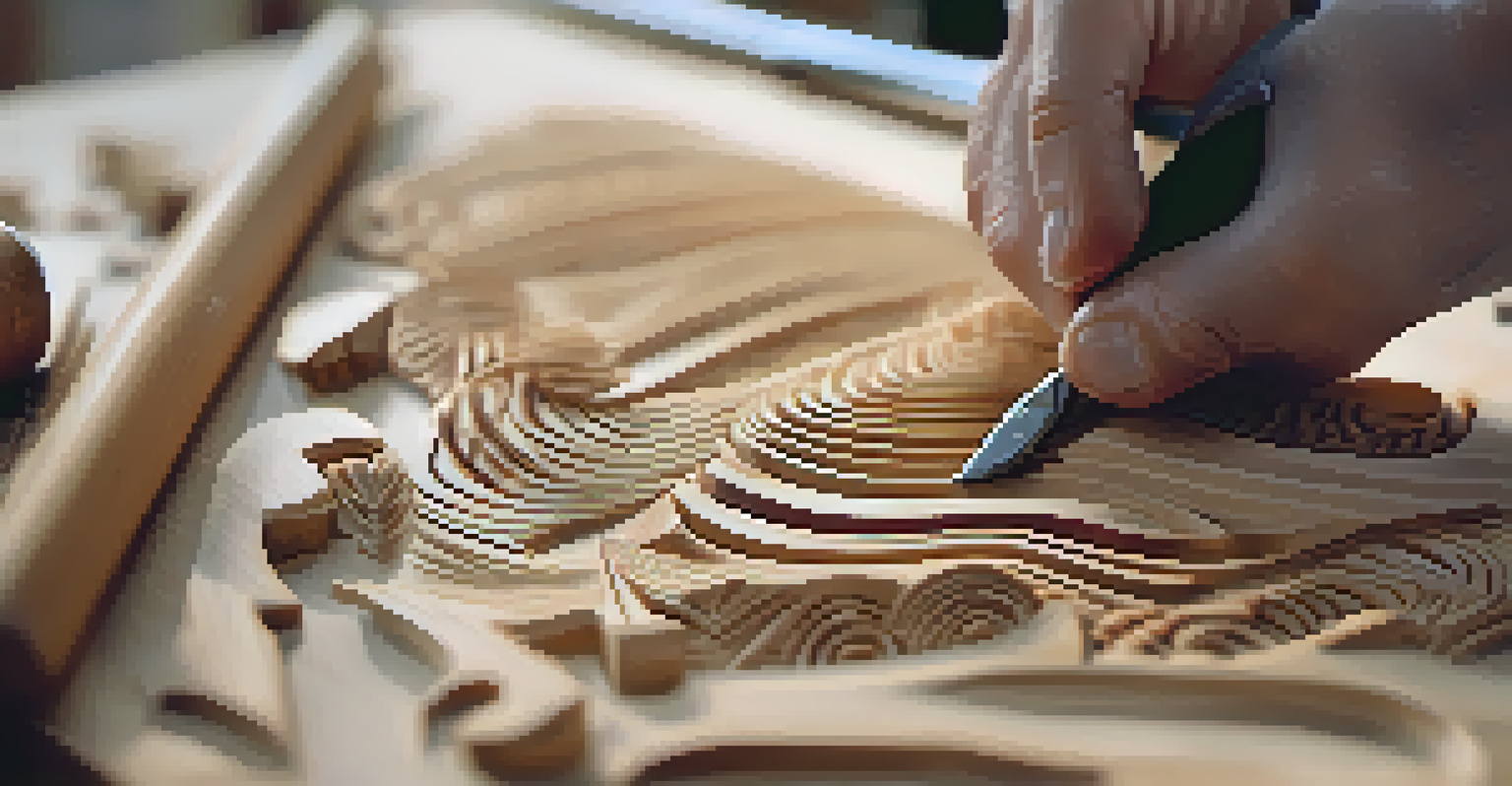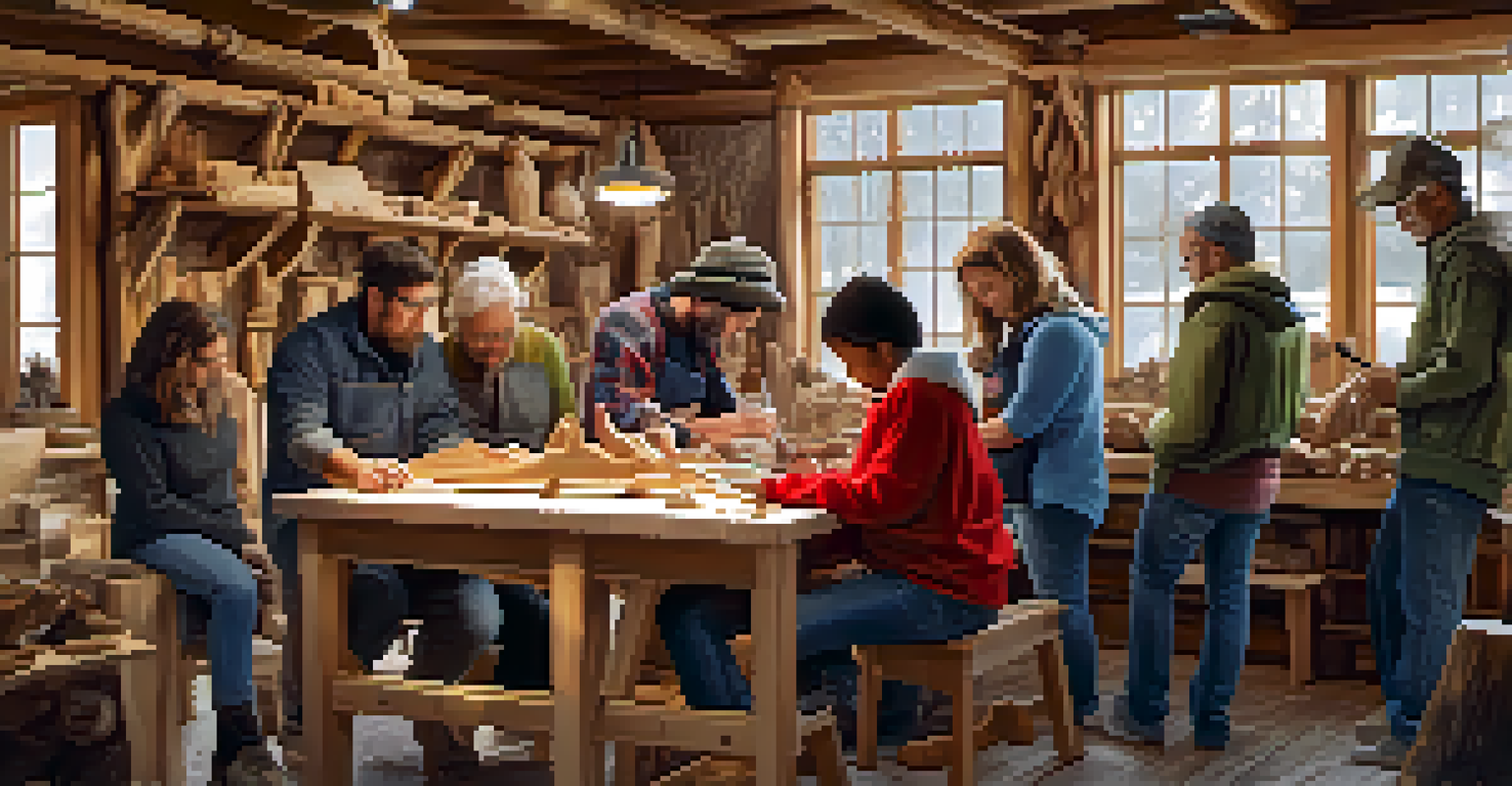From Wood to Wellness: Carving and Mental Health

Understanding the Connection Between Craft and Mental Health
Crafting is often seen as a hobby, but it holds deeper significance, especially for mental health. Engaging in activities like wood carving can provide a therapeutic outlet for stress and anxiety. This connection stems from the act of creation, where focusing on a tangible project allows one to escape from everyday worries.
Art is not freedom from discipline, but disciplined freedom.
Research shows that creative activities stimulate the brain's reward system, releasing feel-good hormones like dopamine. When you carve a piece of wood, you not only create something beautiful but also experience a sense of achievement. This feeling of accomplishment can lead to improved self-esteem and overall mental well-being.
Moreover, the repetitive motions involved in carving can induce a meditative state, promoting mindfulness. As you become engrossed in the details of your craft, it fosters a peaceful mental space that can alleviate symptoms of anxiety and depression.
The Therapeutic Process of Wood Carving
Wood carving is more than just creating items; it's a journey of self-discovery. The process encourages individuals to express their emotions and thoughts through their work. Each cut and shape becomes a reflection of one’s inner state, making the craft a powerful form of personal expression.

This hands-on activity also requires concentration, which is a great way to redirect negative thoughts. By focusing on the grain of the wood or the tool in hand, practitioners find a healthy distraction from their day-to-day stresses. This shift in focus can be incredibly grounding and restorative.
Crafting Boosts Mental Well-Being
Engaging in wood carving provides a therapeutic outlet that promotes mindfulness and reduces stress.
Additionally, the sensory experience of working with wood—feeling its texture, smelling the fresh shavings, and even hearing the sound of the tools—can be incredibly soothing. Engaging multiple senses can heighten the sense of presence, further enhancing the mental health benefits of the craft.
Building Community Through Wood Carving
Wood carving can also foster a sense of community, which is crucial for mental health. Whether through workshops, classes, or online forums, connecting with others who share a passion for carving creates a support network. This social interaction can combat feelings of isolation and loneliness.
Creativity takes courage.
Sharing techniques, challenges, and successes with fellow carvers not only builds skills but also nurtures friendships. These connections can provide emotional support and encouragement, reinforcing the idea that no one is alone in their struggles. It's a beautiful reminder that we all share common experiences.
Furthermore, participating in group projects or community art installations can enhance a sense of belonging. Collaborating on a shared vision reinforces the idea that we are part of a larger community, impacting mental health positively by promoting feelings of unity and shared purpose.
Mindfulness and Focus in Carving
One of the most significant mental health benefits of wood carving is its ability to promote mindfulness. The act of carving requires you to be present in the moment, focusing solely on the task at hand. This mindfulness practice can reduce stress and improve overall emotional regulation.
As you carve, you're likely to notice the nuances of the wood and the intricacies of your tool's movement, which can lead to a state of flow. This state of flow, where you lose track of time and become fully immersed in the activity, is known to enhance happiness and satisfaction.
Community Connection in Carving
Wood carving fosters social interaction, creating supportive networks that combat feelings of isolation.
Incorporating mindfulness into your carving practice can also serve as a form of meditation. By allowing yourself to become fully absorbed in the carving process, you create a mental sanctuary that can help quiet racing thoughts and anxieties.
The Sense of Achievement in Crafting
Completing a wood carving project brings about a profound sense of achievement. This feeling can be especially meaningful for individuals struggling with self-worth or motivation. Each finished piece serves as a testament to your skill, patience, and dedication, reinforcing positive self-affirmation.
This sense of accomplishment can be incredibly empowering, reminding you of your capabilities. For many, the journey of carving transforms from a simple hobby into a pathway for personal growth and resilience. Each successful project can pave the way for new challenges and aspirations.
Moreover, showcasing your work—whether through exhibitions, social media, or gifting—can amplify this sense of achievement. Sharing your creations invites validation from others, which can further boost confidence and encourage continued engagement in the craft.
Carving as a Form of Emotional Expression
Wood carving allows individuals to channel their emotions into a physical form, providing a healthy outlet for feelings. Whether it's joy, frustration, or sadness, the wood becomes a canvas for these experiences. This act of expression can be incredibly cathartic, allowing for emotional release.
The ability to create something visually appealing from raw material can also symbolize personal transformation. Just as the wood changes shape through your efforts, so too can you evolve through your experiences. This parallel can foster a sense of hope and resilience.
Personal Growth Through Creation
Completing carving projects enhances self-esteem and encourages emotional expression, fostering resilience.
Additionally, the stories behind each carving can serve as personal narratives. Sharing these stories with others can deepen connections and foster understanding, ultimately contributing to emotional healing and connection.
Getting Started: Tools and Tips for New Carvers
If you're interested in exploring wood carving as a means of enhancing your mental health, starting with the right tools is essential. Basic tools include carving knives, chisels, and a good quality piece of softwood to practice on. Many beginners find that soft woods like basswood or butternut are easier to work with and forgiving for mistakes.
Consider joining a local carving group or online community to gain insights from experienced carvers. These connections can provide inspiration, tips, and the support you need to overcome challenges. Plus, they’re a great way to meet new people who share your interest in crafting.

Lastly, remember that practice is key. Start with simple projects that excite you, and gradually work your way up to more complex designs. The journey is just as important as the destination, so enjoy the process and embrace the joy of creating!